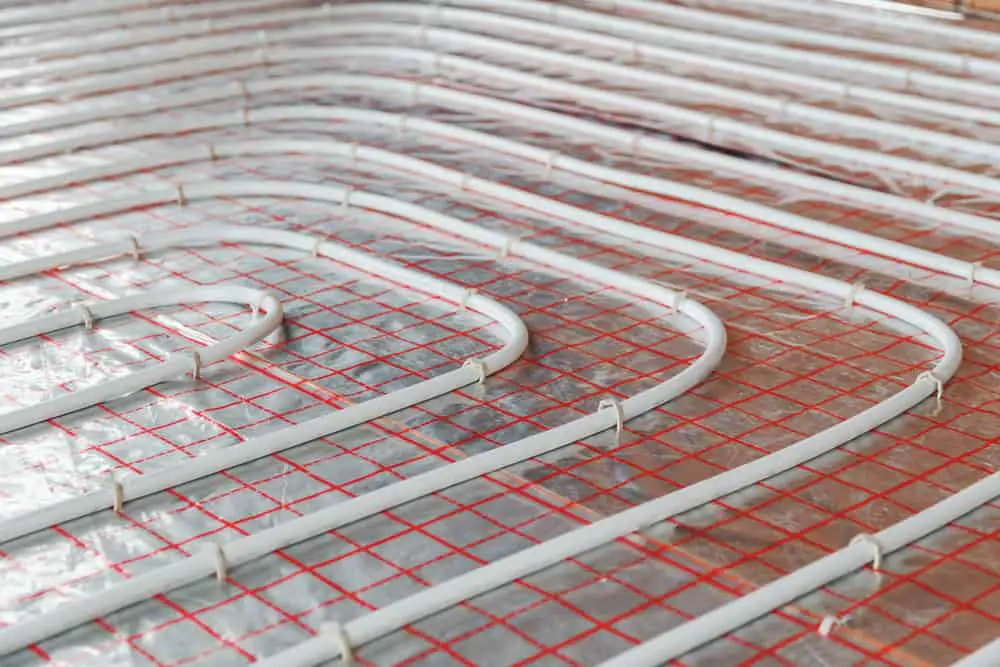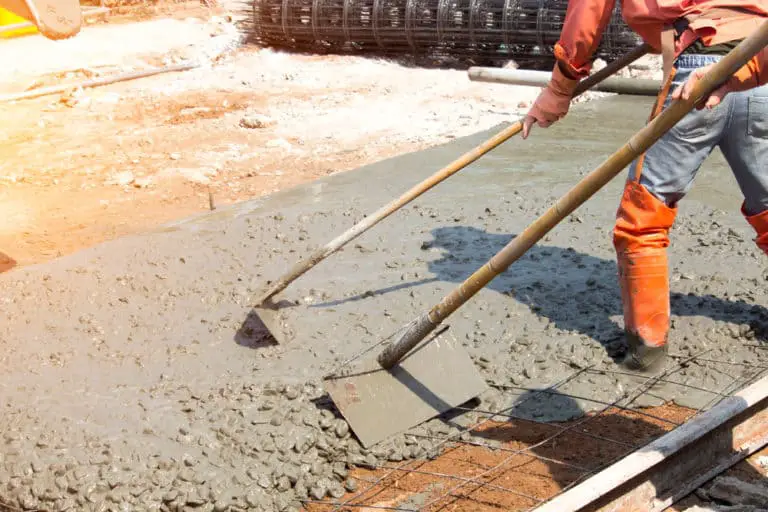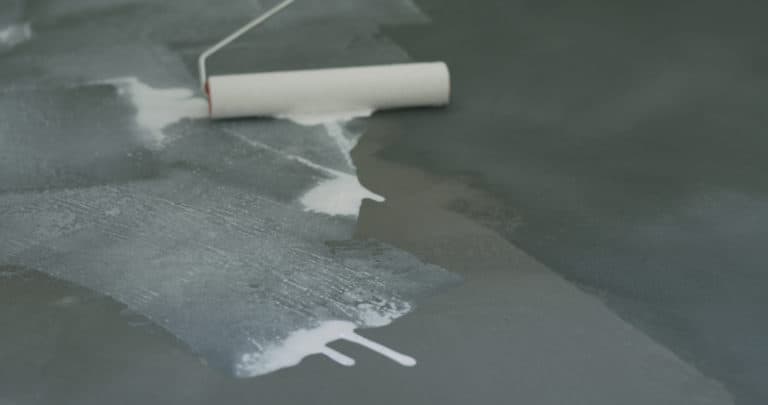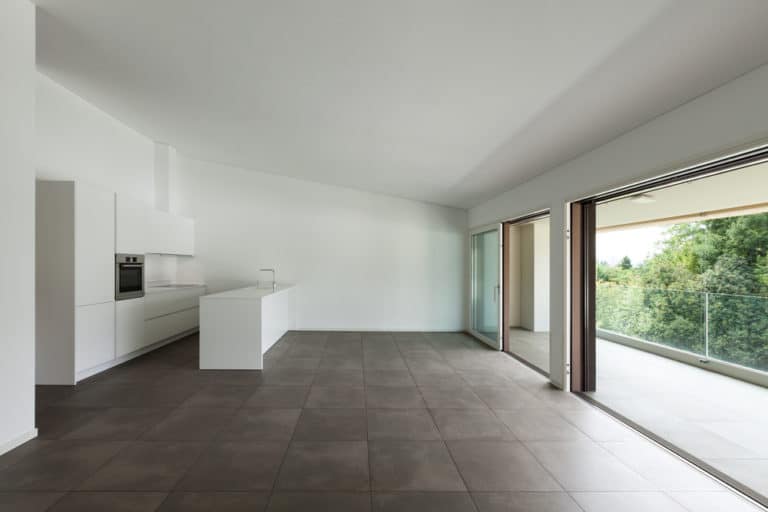Do You Need To Heat Concrete Floors?
Temperature control is one of the most important aspects of protecting your home from deteriorating due to low temperatures. It can get quite tricky figuring out what works and what doesn’t, which can be intimidating considering how costly projects can bring. The question is if it is necessary to heat concrete floors?
Yes, it is recommended to have your concrete floors heated. Concrete, as a material, has low conductivity, which allows it to retain heat longer and better than other materials. A floor heater often heats a concrete floor, usually either electrical or hydroponic.
It’s best to understand how your floor is constructed, whether it’s finishes or construction, and better understand how these factors play a role in-floor heating. Aside from floor heating, it’s also good to know how other aspects within a room play a role in keeping your house role during the wintertime.
Do you need to heat concrete floors?
Firstly, if you need floor heating(also called radiant heating) in the first place, the main advantage of floor heating is found in its consistency, as all areas are equally given the heat. Heated floors are also less intrusive when introducing heat to a room than usual air heating, which can get quite noisy or drafty.
However, there are some caveats that you need to know about floor heating: its build-up time. Since we’re heating a solid object, the delivery of heat will take longer, but at the same time, it will last longer as well(compared to air heating). This may pose a problem if you need heat quickly, but it won’t be noticeable if you opt for an automated temperature control system connected to your radiant heaters.
Concrete is an excellent material for floor heaters as it works well with its benefits. Although, it can get quite expensive, especially if it needs to be cleared out first. Regardless, the use of maximizing your heaters through increased heat retention efficiency makes this project well worth it.
How much does it cost to heat concrete floors?
The question now is if it’s worth the money to have concrete floors heated. The upfront installation costs of a radiant floor heating system range from $10- $15 per square foot.
This heating system will consume around 12 watts per square foot per hour during use.
For example, if you have a home with 1000 sq ft of floor that needs heating. This project will run you at least $10,000 – $15 000 in installation alone. If you go for higher-end floor heaters or create a new heating system entirely from scratch, that price can go up to $30,000 – $40,000.
The price tag is steep, but it comes with the benefits of not having any draft, noise, or space-consuming heating systems while at the same time having consistent temperatures at a lower energy consumption rate. If you plan on living in your house for a long-time, around 20-30 years or even more, then radiant heating might be the best choice for you!
How are concrete floor heaters installed?
There are two ways of installing a radiant floor heater onto a concrete floor which is determined if you already have a slab constructed.
For newer projects, PEX tubes that carry out heated water are laid out where the concrete slab will be poured. The heated water can either be generated within the floor(through installing heated wires below the PEX tubes) or sourced from an external boiler.
For rooms with an existing concrete slab, a thin overlay of electric heating mats is installed and then covered with a concrete finish to hide them. Compared to the PEX tubes, heating mats will consume more electricity, but it makes up for it by avoiding the upfront costs of having an entirely new slab poured.
Here’s a short table summarizing the main differences between a hydronic floor heating system and an electric floor heating system:
| Radiant Floor Heaters | |
| Hydronic Floor Heater | Electric Floor Heater |
| Larger upfront costs ($15 – $25 per sq ft) | Lower upfront costs ($10 – 20$ per sq ft) |
| Built into a concrete slab | Installed on top of a pre-existing slab |
| Gets heat from water | Gets heat from electricity |
| Lower energy costs in the long run | Higher energy costs in the long run |
Generally, this project should not be DIY, as you’ll be working with a lot of utilities to make this type of heating system work well. The specific steps are carried out by an electrical engineer and even a plumber(If you’ll be using pipes to heat your floor) to ensure that the radiant floor heaters can function optimally and within range.
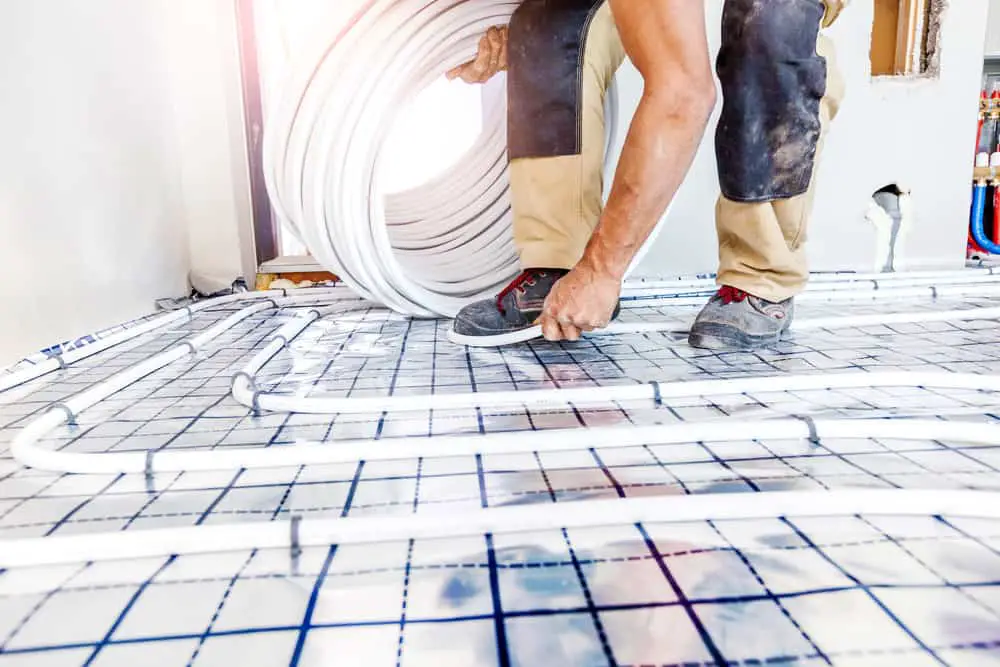
Does a concrete floor need insulation?
Any heat produced will just go to waste if you can’t keep it inside your home. Since heating is pretty expensive in terms of the electric bill, we want to make the most out of this and design our homes as efficiently as possible with any heat produced.
Aside from keeping the heat in and the cold out, insulation also prevents moisture from damaging parts of your home. Radiant heating systems such as these work even better than air heating systems in preventing fixtures, such as pipes, from freezing over during the wintertime.
With that said, it is recommended to have insulation installed beneath your radiant floor heaters. You shouldn’t place insulation between the heater and the floor or above your floor because that will block out the heat.
Conclusion
Concrete is a great material that works well with radiant floor heaters. They will take quite a while to heat up and retain heat the longest, making for a great heating system for maintaining constant temperatures.
The biggest benefit of radiant floor heaters on concrete is that they equally heat a room, can maintain a better consistency of temperature, and its low energy costs to operate.
Sources
- https://www.concretenetwork.com/radiant-floor-heating/
- https://www.hunker.com/13723272/heated-concrete-floors-a-homeowners-guide
- https://www.warmlyyours.com/en-US/posts/how-to-install-radiant-heat-in-a-concrete-floor
- https://www.forbes.com/advisor/home-improvement/radiant-heating-floor-cost/#:~:text=If%20you’re%20building%20a,for%20electric%20radiant%20floor%20heating

